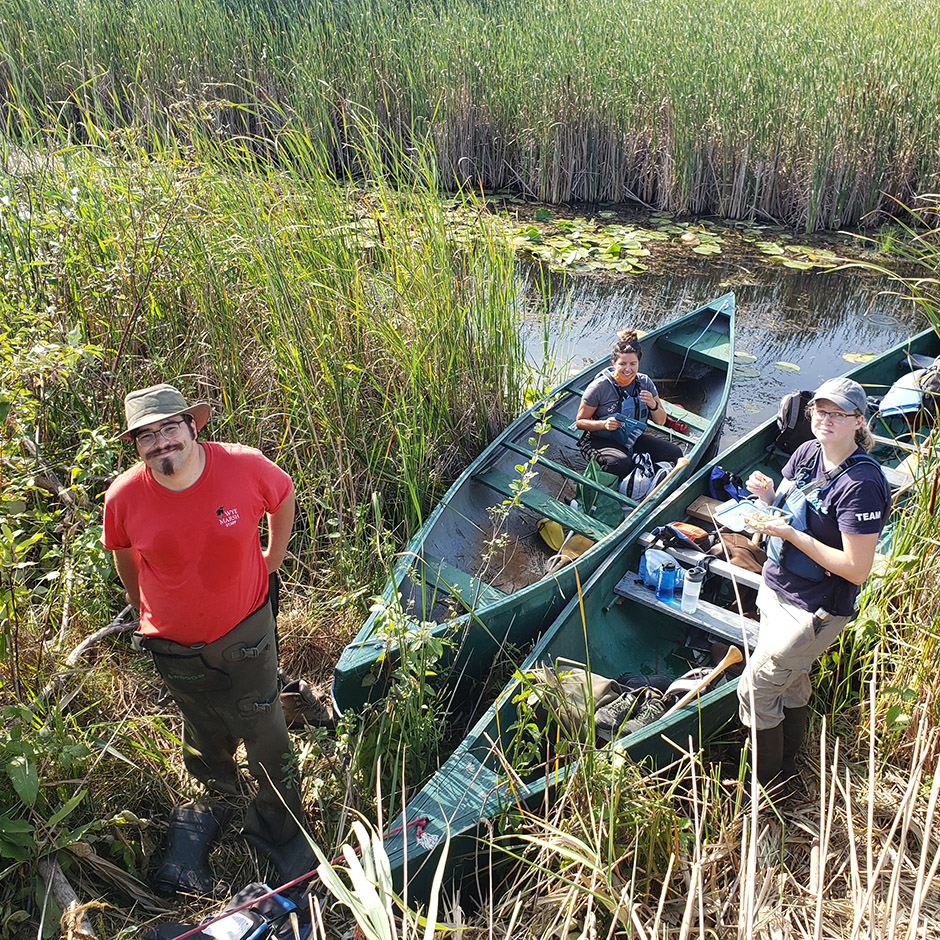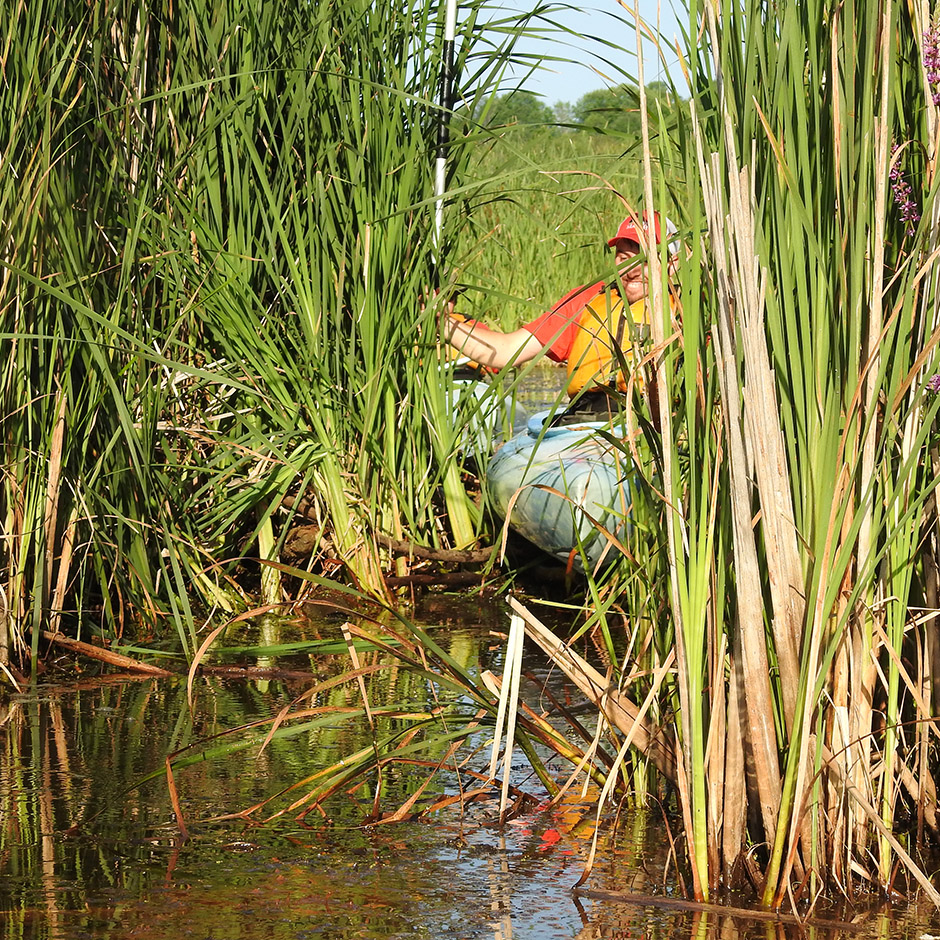Severn Sound Environmental Association
Wye Marsh Phragmites Management Project
Blanding’s turtle (Emydoidea blandingii)
Eastern musk turtle (Sternotherus odoratus)
Spotted turtle (Clemmys guttata)
Blanding’s turtle (Emydoidea blandingii)
Eastern musk turtle (Sternotherus odoratus)
Spotted turtle (Clemmys guttata)

Project Title: Wye Marsh Phragmites Management Project
Funding Recipient: Severn Sound Environmental Association
Funding Awarded: $250,000 over 5 years
Project Partners: Friends of Wye Marsh
Targeted Species at Risk: Blanding’s turtle, Eastern musk turtle and Spotted turtle
Project Status: Ongoing (Five-year duration, 2020-2024)

The Wye Marsh covers ~1,215 hectares of Provincially Significant Wetland and surrounding upland in the Severn Sound Watershed of Eastern Georgian Bay. Within this region, the Severn Sound Environmental Association (SSEA) runs an Invasive Species Program which focuses on prevention, detection and management of non-native, invasive organisms. In particular, the program focuses on the invasive European Common Reed (Phragmites australis ssp. Australis), commonly referred to as Phragmites, whose presence in Wye Marsh threatens the health of the marsh and the species who inhabit the area.
In 2020, Friends of Wye Marsh, in consultation with SSEA, were awarded $50,000 from the Eastern Georgian Bay Initiative to advance work to address and mitigate negative impacts of Phragmites on Eastern Georgian Bay SAR. The funding is the first of five annual allotments of $50,000 that will advance project efforts from 2020 through 2024. Activities in 2020 included creation of a 2020 – 2024 Phragmites Management Plan to guide implementation of Phragmites control and disposal methods as well as outreach and training activities to build capacity for Phragmites identification and share knowledge on technical guidance, research, and best management practices.
Successful implementation of these actions will mean a healthier and more diverse ecosystem whereby marsh habitat is restored to its original conditions that support SAR turtle overwintering, mating, foraging, thermoregulation, and movement. More broadly, it will mean a healthier, more resilient marsh with native vegetation, diverse wildlife habitat and stable, self-regulating hydrology that benefits both human societies and natural communities.

For more information on the Wye Marsh Phragmites Management Project, please visit the links below.
Severn Sound Environmental Association Website
Friends of the Wye Marsh Website
Georgian Bay Forever – Invasive Phragmites Website
PDF – Invasive Phragmites Site Management Plan 2021